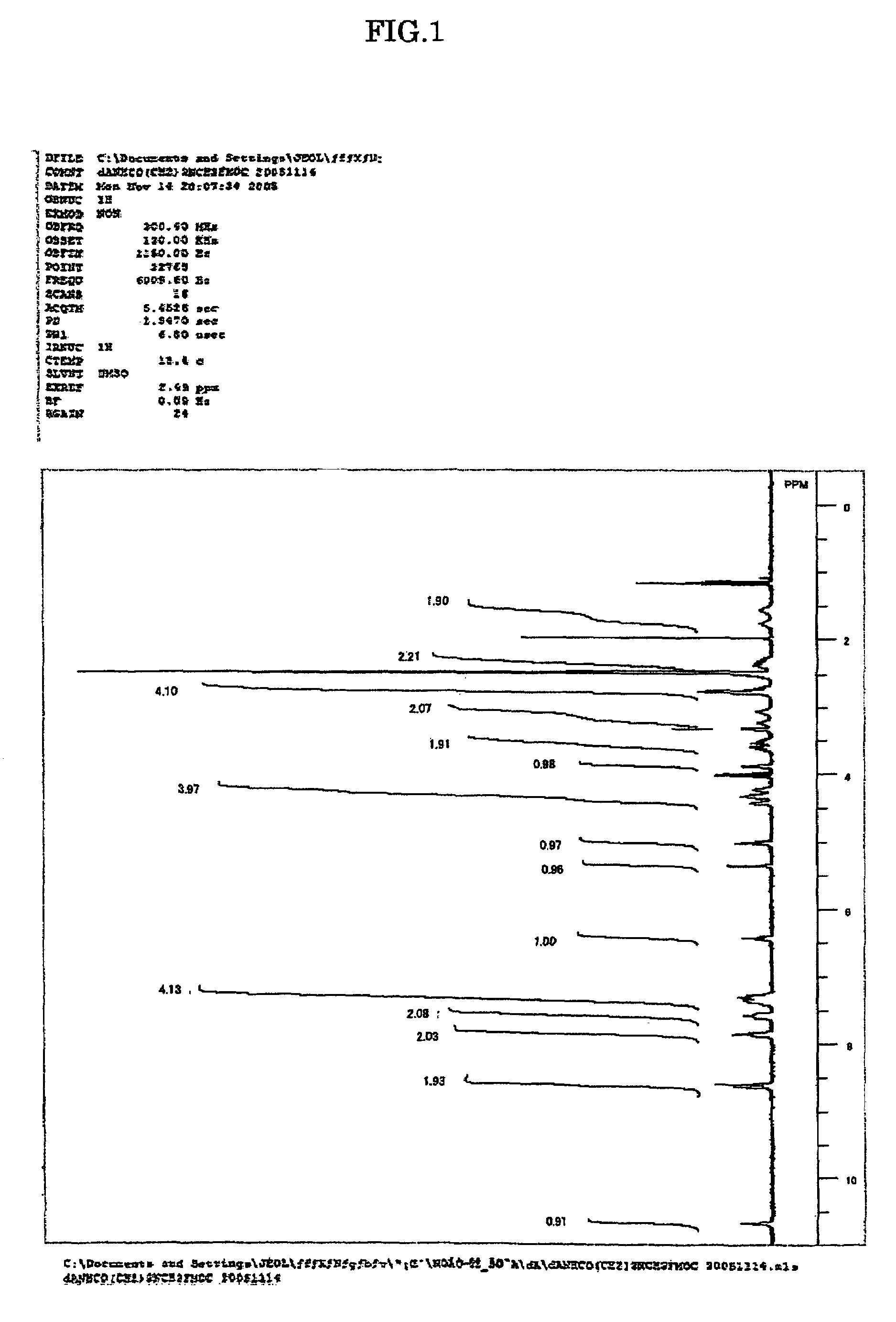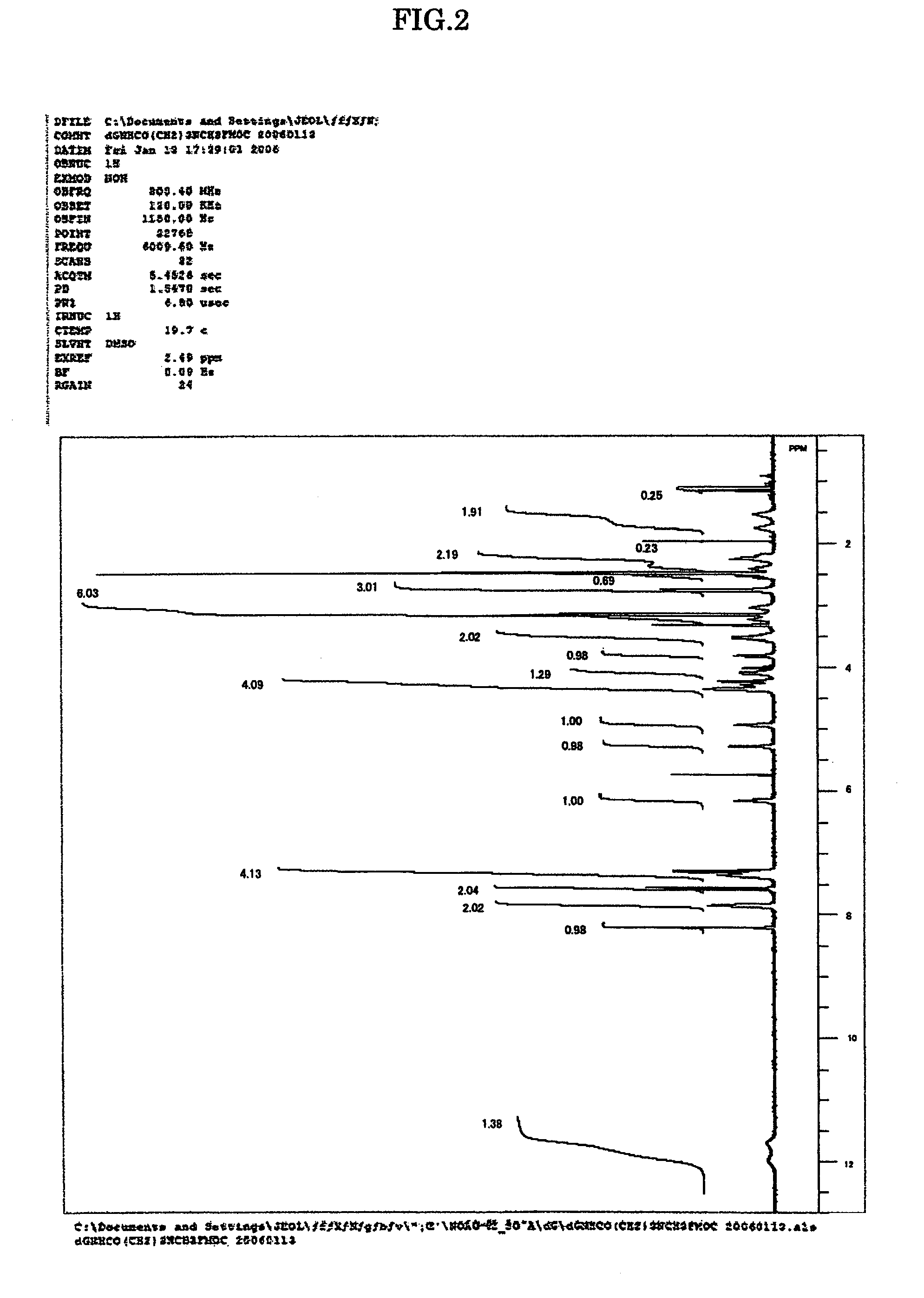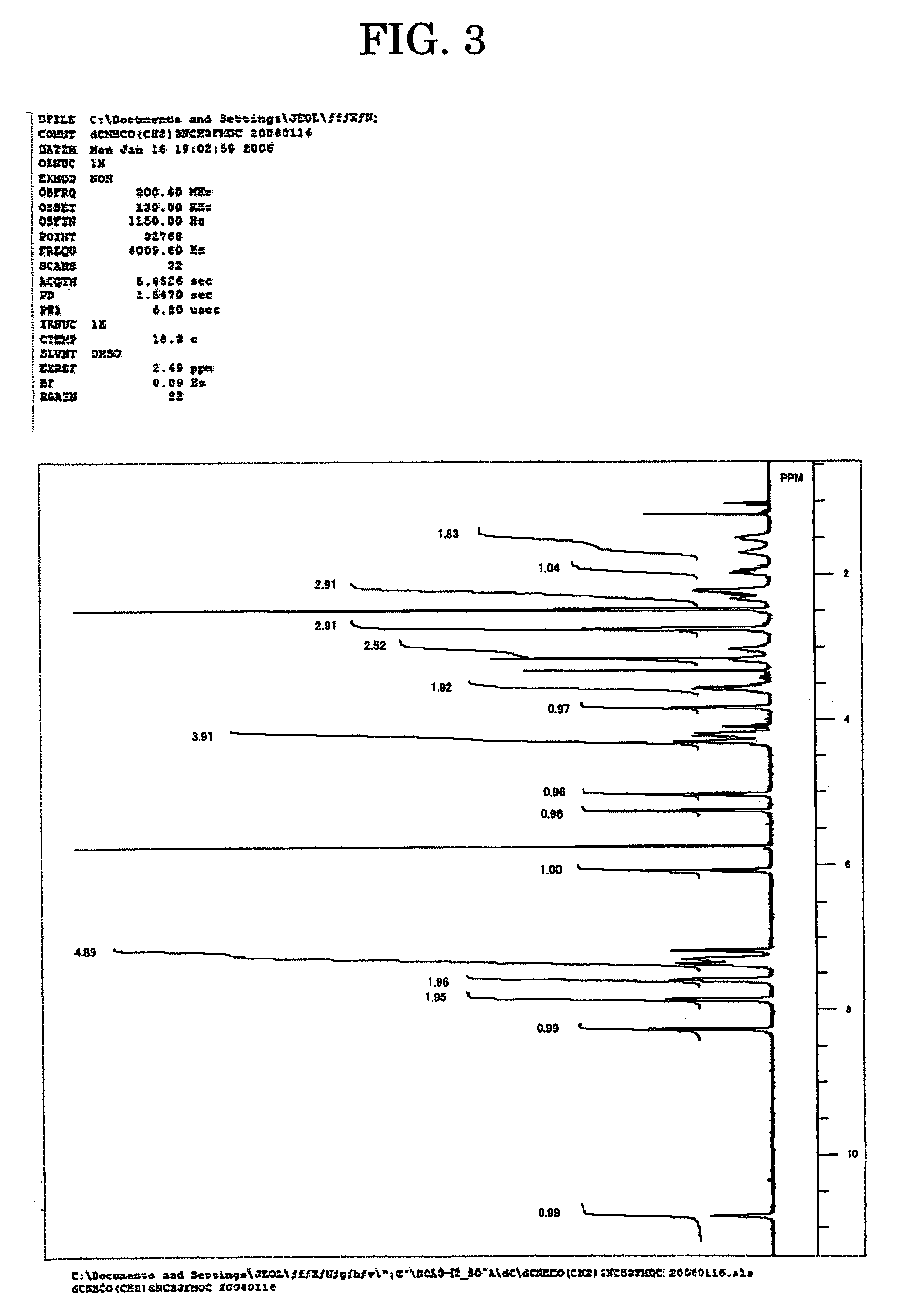Amidite for nucleic acid synthesis and nucleic acid synthesizing method
a technology of nucleic acid and amidite, which is applied in the direction of sugar derivates, organic chemistry, chemical production of bulk materials, etc., can solve the problems of decomposition, alkylation of nucleic acid bases, and inapplicability to practical us
- Summary
- Abstract
- Description
- Claims
- Application Information
AI Technical Summary
Benefits of technology
Problems solved by technology
Method used
Image
Examples
example 1
Synthesis of Amidite for Nucleic Acid Synthesis
[0048]The amidites for nucleic acid synthesis IIIa, IIIg and IIIc of the present invention were synthesized in the following manner. Note that the amidites for nucleic acid synthesis IIIa, IIIg and IIIc are amidites for nucleic acid synthesis corresponding to the ones represented by Structural Formulae (1), (2) and (3) above, respectively.
[0049]
[0050]7.68 g (50 mmol) of N-methylamino butyric acid hydrochloride was dissolved in 50 mL of water, 4.20 g (50 mmol) of NaHCO3 was added, and all of these were agitated for 10 min. This solution was agitated for two days at room temperature, with 13.49 g (40 mmol) of 9-fluorenylmethyl succinimidyl carbonate, 100 mL of acetonitrile and 0.14 g (0.4 mmol) of tetrabutylammonium hydrogen sulfide added. After being concentrated under reduced pressure, the solution was diluted with methylene chloride and washed with water. After being concentrated under reduced pressure and subjected twice to azeotropy ...
example 2
Confirmation of Deprotection in DNA Synthesis 1
[0062]The fact that protective groups in the amidites for nucleic acid synthesis synthesized in Example 1 above can be removed under moderate conditions was confirmed in the following manner. As shown in Conditions 1 to 4 below, 5′-dGpApCpTp C3 SS CPG was synthesized using the amidites without conducting a capping operation, and the protective groups in the amidites were removed.
[0063]Additionally, dT amidite, benzoyl-protected dA amidite, benzoyl-protected dC amidite, isobutyryl-protected dG amidite, 3′-thiol-modifier C3 S-S CPG, phenoxyacetyl-protected dA amidite, acetyl-protected dC amidite and 4-isopropyl-phenoxyacetyl protected dG amidite used here in Example 2 were purchased from Glen Research Corp. Tris(2-carboxyethyl)phosphine hydrochloride (TCEP) was purchased from Sigma-Aldrich Co. A DNA synthesizer H8-F by GeneWorld Limited was used for DNA synthesis, without altering a synthesis program attached.
—Condition 1 (Contrast Area)—...
example 3
Confirmation of Deprotection in DNA Synthesis 2
[0073]The fact that protective groups in the amidites for nucleic acid synthesis synthesized in Example 1 above can be removed under moderate conditions was further confirmed in the following manner.
[0074]ABI381A manufactured by Applied Biosystems was used as an automatic DNA synthesizer, and IIIa, the IIIc, the IIIg and T amidite were synthesized in this order to 3′-thiol-modifier C3 S-S CPG purchased from Glen Research Corp. As a synthesis cycle was used as it was without modification, synthesis was made possible with a yield of 98% or more at each stage. “DNA solution A” was obtained by applying 200 μl of 0.01M DBU to this resin for 15 min and then applying 400 μl of 0.1M DTT solution for 4 hr.
[0075]Meanwhile, as a control, A amidite, C amidite, G amidite and T amidite were synthesized in this order with respect to similar 3′-thiol-modifier C3 S-S CPG, deprotection and excision were conducted by means of ammonia water in the presence...
PUM
| Property | Measurement | Unit |
|---|---|---|
| time | aaaaa | aaaaa |
| time | aaaaa | aaaaa |
| time | aaaaa | aaaaa |
Abstract
Description
Claims
Application Information
 Login to View More
Login to View More - R&D
- Intellectual Property
- Life Sciences
- Materials
- Tech Scout
- Unparalleled Data Quality
- Higher Quality Content
- 60% Fewer Hallucinations
Browse by: Latest US Patents, China's latest patents, Technical Efficacy Thesaurus, Application Domain, Technology Topic, Popular Technical Reports.
© 2025 PatSnap. All rights reserved.Legal|Privacy policy|Modern Slavery Act Transparency Statement|Sitemap|About US| Contact US: help@patsnap.com



